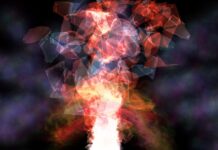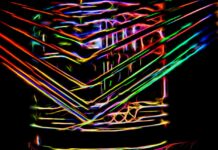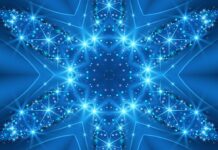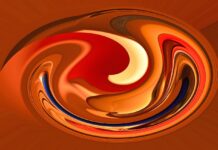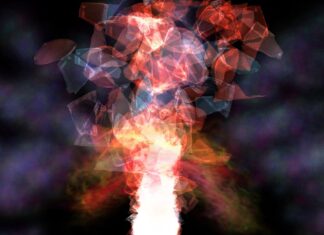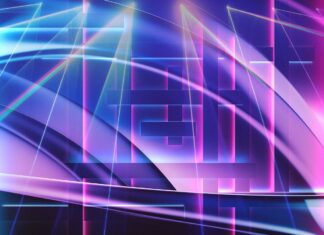AI-Generated Literature and Music: The Fusion of Creativity and Technology
In the ever-evolving landscape of technology, one of the most remarkable and transformative advancements has been the emergence of Artificial Intelligence (AI) as a creative collaborator. AI, once primarily associated with calculations and computations, has ventured into the realm of artistic expression, giving rise to AI-generated literature and music. This novel intersection of human creativity and machine intelligence has sparked both awe and skepticism, challenging traditional notions of artistic authenticity while opening doors to unprecedented forms of artistic innovation.
AI-generated literature and music are products of sophisticated algorithms that leverage vast datasets and neural networks to mimic human artistic processes. These algorithms, often rooted in deep learning and natural language processing (NLP) techniques, can analyze existing works of literature, poetry, or music to discern patterns, styles, and emotional nuances. Subsequently, they generate new content that imitates the characteristics of the input data. This process raises intriguing questions about the nature of creativity, authorship, and the role of machines in shaping artistic landscapes.
In the realm of literature, AI has shown its capacity to produce prose, poetry, and even entire novels that emulate the styles of famous authors or encapsulate the sentiment of particular genres. Projects like OpenAI’s GPT-3 have demonstrated the ability to generate coherent and contextually relevant text that often blurs the line between human and AI composition. The technology can craft intricate narratives, generate dialogue, and even experiment with unconventional linguistic structures. AI’s literary endeavors have not only astounded readers but have also been utilized as tools for brainstorming, content drafting, and language translation.
Similarly, AI’s influence on music composition has been equally profound. Machines can analyze vast catalogs of musical pieces, identifying chord progressions, melodic patterns, and rhythm variations that define specific genres or artists. AI models have been trained to compose original musical compositions, imitate the styles of classical composers, or even collaborate with human musicians. The resulting pieces range from hauntingly beautiful melodies that resonate with human emotions to avant-garde symphonies that challenge traditional notions of musical theory. AI-generated music stretches the boundaries of auditory aesthetics and prompts us to contemplate the very essence of musicality.
While AI’s contributions to literature and music are undeniably intriguing, they also ignite debates concerning the nature of creativity, originality, and the role of human intuition in the artistic process. Critics argue that AI-generated works lack the soul and genuine emotion that stem from personal experiences, struggles, and cultural contexts. The profound human experiences that often shape artistic endeavors are seen as irreplaceable by even the most advanced algorithms. Moreover, concerns about the potential homogenization of artistic expression arise, as AI models tend to replicate existing patterns rather than genuinely innovate.
Proponents of AI-generated creativity, on the other hand, envision a world where technology acts as a limitless source of inspiration, enabling artists to explore new territories and experiment with unprecedented styles. AI can facilitate collaboration between artists and machines, leading to hybrid creations that marry human insight with machine efficiency. Furthermore, the accessibility of AI-generated tools could democratize artistic expression, allowing individuals who may lack formal training to engage with the creative process in novel ways. The debate raises profound questions about what defines artistry and whether the source of creation ultimately matters as much as the impact on the audience.
Ethical considerations also permeate the realm of AI-generated art. Issues of intellectual property and copyright become convoluted when algorithms are involved in artistic production. Determining the ownership of AI-generated works raises complex legal and philosophical questions. Should the creators of the AI algorithms be considered the authors of the generated content, or does that distinction belong to the individuals who trained the model or provided the input data? Navigating these legal intricacies is crucial as AI-generated art becomes more prevalent in commercial and creative spheres.
As AI-generated literature and music continue to evolve, it becomes imperative to establish guidelines for responsible and ethical use. Ensuring transparency in disclosing whether a piece of art is AI-generated is essential to maintaining the integrity of artistic experiences. Additionally, educating audiences about the role of AI in creative processes can foster a deeper appreciation for the intersection of technology and art. Society must grapple with these challenges and opportunities as AI-generated creativity becomes an integral part of the cultural tapestry.
In conclusion, AI-generated literature and music represent a convergence of human creativity and technological prowess. These innovative creations challenge our understanding of artistic authenticity, push the boundaries of traditional artistic forms, and offer a glimpse into the future of human-machine collaboration. As AI algorithms continue to advance and infiltrate the world of art, we must reflect on the ethical, creative, and societal implications of this fusion, ultimately shaping the course of artistic expression for generations to come.
The emergence of AI-generated literature and music marks a significant juncture in the ongoing narrative of human-technology interaction. It is a manifestation of the remarkable progress made in the field of artificial intelligence, where machines are not only performing utilitarian tasks but also participating in creative endeavors that were once considered the exclusive domain of human beings.
At the heart of AI-generated literature and music lies a fascinating interplay between human ingenuity and machine learning algorithms. These algorithms are designed to learn and mimic patterns from vast amounts of data, enabling them to replicate styles, structures, and emotional nuances that characterize human-generated content. The algorithms function as neural networks, processing and interpreting the information they’ve been trained on to generate new, coherent, and contextually relevant pieces of literature and music.
In the realm of literature, AI algorithms have undergone a transformation from mere sentence generators to intricate text creators. This evolution is exemplified by models like OpenAI’s GPT-3, which can produce articles, stories, and even poetry that often defy immediate detection as machine-generated content. The generated text flows seamlessly, maintaining context, coherence, and thematic consistency. It is capable of understanding prompts, following guidelines, and responding to complex queries, displaying an understanding of language that is nothing short of remarkable.
AI-generated literature is not confined to mere replication. It often goes beyond mimicry, creating unique pieces that might not have existed otherwise. In this sense, AI acts as a collaborator, a digital muse that contributes new ideas and perspectives to the creative process. This collaborative potential can be harnessed by writers who seek inspiration or struggle with writer’s block. The AI can provide alternative sentence structures, suggest plot twists, or even offer thematic variations, sparking a dialogue between human imagination and machine suggestions.
Similarly, AI’s influence on music composition is equally profound. Machines can analyze a wide spectrum of musical genres and compositions, distilling underlying patterns and structures that define specific styles. AI models can then generate original pieces that align with these patterns or deviate from them to create something entirely novel. The music generated spans various genres, from classical symphonies reminiscent of renowned composers to experimental electronic melodies that challenge conventional musical norms.
The role of AI in music goes beyond just composition; it extends to assisting musicians in performance and production. AI algorithms can process and interpret live music data, adjusting sound levels, eliminating noise, and even generating real-time accompaniments. This offers musicians an additional layer of creativity during live performances, enabling them to experiment with variations and improvisations driven by the AI’s responses to their music.
The ethical implications of AI-generated art are a subject of intense debate. While AI-generated literature and music can be viewed as technological marvels, they also raise questions about originality, authenticity, and the essence of human creativity. Critics argue that genuine artistry is grounded in human experience, emotions, and cultural context, elements that AI algorithms lack. The profound human struggles and triumphs that often find expression through art are considered irreplaceable by machines. Furthermore, concerns about the potential homogenization of artistic expression arise, as AI models tend to reproduce existing patterns rather than truly innovate.
On the opposing side, proponents of AI-generated art emphasize the value of creative exploration and collaboration. They argue that AI can be a catalyst for artists to delve into uncharted territories, pushing the boundaries of established norms and discovering novel artistic forms. AI-generated art can be seen as a tool that augments human creativity, offering fresh perspectives and enabling artists to experiment with unconventional styles and techniques. It can also democratize access to creative expression, empowering individuals who might not have formal training to engage with the artistic process in meaningful ways.
Navigating the legal and ethical complexities of AI-generated art requires a delicate balance. Determining the ownership and rights of AI-generated works remains a challenge. The creators of AI algorithms, the individuals who trained the models, and the users who provided input data all have potential claims to authorship. The evolving landscape of intellectual property law will need to adapt to this new paradigm, finding ways to recognize and protect the contributions of both humans and machines.
As AI-generated literature and music continue to evolve, considerations of transparency become paramount. It’s essential for audiences to know whether they are engaging with human-created or AI-generated content, respecting the authenticity of both artistic processes. Establishing clear guidelines for labeling and identifying AI-generated art can help preserve the integrity of artistic experiences and foster informed consumption.
In conclusion, AI-generated literature and music represent a convergence of human ingenuity and technological advancement. They challenge preconceived notions of creativity, blur the lines between human and machine authorship, and open up new avenues for artistic exploration. The ongoing discourse around AI-generated art encapsulates complex questions about identity, authenticity, and the changing nature of artistic expression. The fusion of human creativity and machine learning algorithms is reshaping the creative landscape, prompting us to reconsider our understanding of art and the role of technology in shaping it.
The advent of AI-generated literature and music has ushered in a new era where technology is not only shaping our daily lives but also influencing the very essence of human expression. This intriguing fusion of human creativity and artificial intelligence has given rise to a multitude of discussions that extend far beyond the realm of algorithms and data processing.
In the realm of literature, where words have the power to ignite emotions, provoke thoughts, and transport readers to distant realms, the involvement of AI presents both opportunities and challenges. Literature, throughout history, has been a medium through which authors share their unique perspectives, voice societal concerns, and capture the nuances of human experiences. The idea of machines generating literature brings into question the intangible aspects that define the essence of being human. Can AI truly replicate the soulful prose of a writer who has faced love, loss, and the complexities of existence? Can an algorithm capture the essence of personal growth, cultural heritage, or the intricacies of human relationships that often permeate literary works?
Yet, the potential of AI in literature is undeniable. It offers a tool for exploration, a means to dive into uncharted narrative territories. Writers can use AI-generated content as prompts, igniting their own creativity by responding to the unexpected twists and turns that emerge from algorithmic suggestions. This collaborative dance between human imagination and machine-generated concepts opens up a new chapter in literary experimentation. Moreover, the accessibility of AI-generated tools democratizes the writing process. Aspiring writers who might have hesitated due to self-doubt or lack of formal training can now engage in the act of creation, embarking on literary journeys that were once reserved for a select few.
In the realm of music, the harmony between human emotion and AI-generated compositions presents a fascinating dichotomy. Music has an innate ability to evoke feelings, trigger memories, and serve as a universal language that transcends cultural barriers. However, the notion of a machine composing melodies that tug at the heartstrings raises questions about the origin of emotional resonance. Can a piece of music crafted by an algorithm invoke the same depth of sentiment as a symphony composed by a musician who has poured their soul into every note? Can AI grasp the nuances of joy, sorrow, or nostalgia that musicians often infuse into their compositions?
Nevertheless, AI-generated music showcases the potential for innovation and exploration. It enables composers to experiment with styles and genres that might be unfamiliar, generating compositions that fuse classical with electronic or folk with jazz. This cross-pollination of musical genres pushes the boundaries of artistic conventions, allowing for the emergence of novel soundscapes that captivate listeners. Additionally, AI’s ability to generate real-time accompaniments during live performances empowers musicians to engage in spontaneous interactions with their own compositions. It transforms the act of performance into a dynamic dialogue between the musician and the machine, blurring the lines between artist and instrument.
The ethical underpinnings of AI-generated literature and music invite a profound contemplation of the intersection between human intentions and machine capabilities. As these technologies evolve, the question of intent becomes paramount. While algorithms can synthesize words and notes, they lack the intentionality that characterizes human creation. A poet chooses words with purpose; a composer crafts melodies with intention. AI, however, operates within the parameters of its programming and training data, devoid of personal experiences, dreams, or desires. This difference in intent raises queries about the authenticity of the creative process and the extent to which genuine artistic expression can emerge from the realm of algorithms.
In the legal arena, the rise of AI-generated art gives rise to intricacies surrounding copyright, intellectual property, and ownership. Determining authorship becomes a complex puzzle where elements of training data, algorithm design, and user input intermingle. Legal frameworks designed to protect human-generated content must now grapple with the inclusion of non-human agents in the creative process. This dynamic introduces a new layer of legal nuance as creators, AI developers, and content users seek to define their roles in this evolving landscape.
In essence, the emergence of AI-generated literature and music has unleashed a cascade of reflections on creativity, identity, and the evolving relationship between humans and technology. As these digital creations continue to captivate audiences, it is imperative that society engages in a holistic dialogue that transcends technical aspects and delves into the very core of our human experience. In doing so, we can arrive at a deeper understanding of the synergies and tensions that arise when human ingenuity converges with the boundless possibilities of artificial intelligence.




